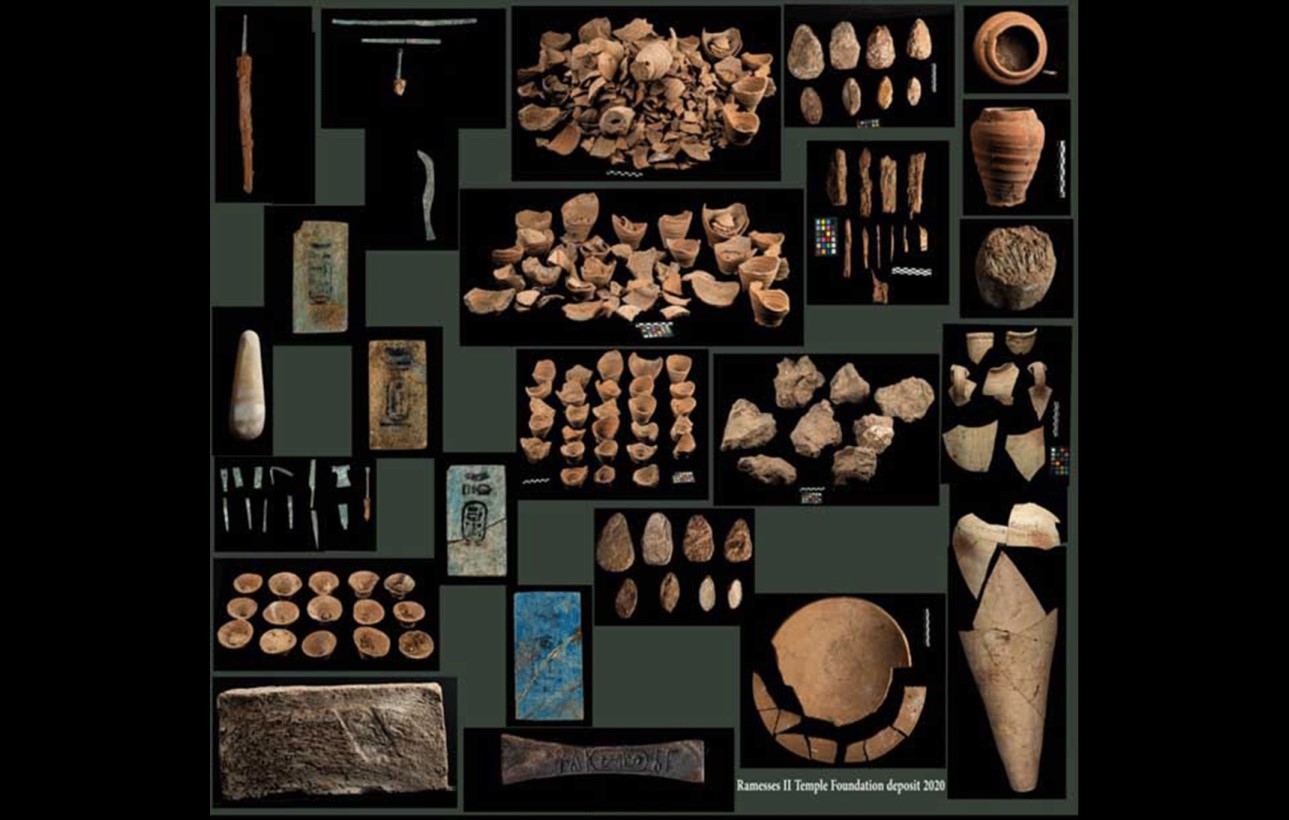Twelve sacrificial votive bulls’ heads and bones dated to the Ptolomaic period were found in niches cut into the walls of the storerooms
The mission also uncovered 10 large mud-brick storerooms attached to the temple palace, originally roofed with vaulted brick ceilings. They were used as granaries, storage of other temple provisions, offerings, and other small equipment.
Twelve sacrificial votive bulls’ heads and bones dated to the Ptolomaic period were found in niches cut into the walls of the storerooms. In addition, a complete skeleton of a bull was found carefully buried under the floor of the temple palace.
Iskander believes the foundation deposits bearing the throne name of Ramses II buried under his first temple built in Egypt confirm the temple was indeed constructed during his reign, not his father’s.
“This discovery has changed the physical appearance of the Abydos landscape and shed considerable light on our understanding of the temple and its economy during the 13th century BC, Iskander said.
He explained that the insertion of numerous votive sacrificial bulls into the walls of the temple dated to the Ptolomaic period reveals that the temple was regarded then as a sacred place.
“This is testimony to the vivid memory of Ramses II in the Egyptian mind 1,000 years after his reign,” he pointed out.
ahramonline




